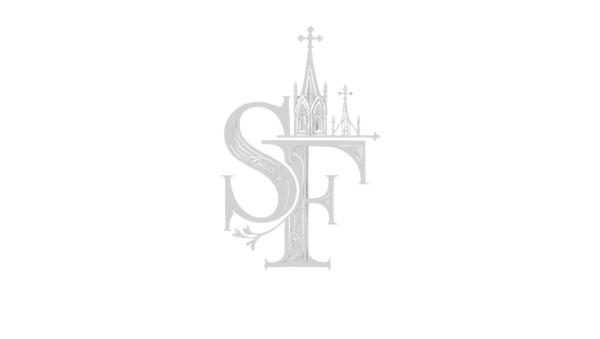
Step into a Gothic cathedral and lift your eyes to the windows. What holds the glass in place is as captivating as the glass itself: tracery. These intricate stone frameworks, carved into lace-like patterns, are among the defining features of Gothic design. Delicate yet strong, tracery transformed heavy walls into canvases of light and colour. Behind their beauty lies a story of innovation, imagination, and symbolism.
From Strength to Ornament
In the earliest Gothic cathedrals, windows were small and plain, their stone frames largely structural. But as builders experimented with ribbed vaults and flying buttresses, walls became lighter and could support larger windows. To hold these vast expanses of glass, masons developed stone frameworks called tracery.
Plate Tracery – the earliest form, where shapes were cut directly into a thick slab of stone, creating simple circles or quatrefoils.
Bar Tracery – by the 13th century, masons shifted to thin stone bars that allowed much more elaborate patterns. This innovation gave Gothic windows their signature delicacy.
Tracery thus evolved from a structural necessity into an art form in its own right.
Patterns of Faith
Tracery was never random. Each design reflected geometry and theology:
Circles – eternity, divine perfection.
Trefoils (three-lobed) – the Trinity.
Quatrefoils (four-lobed) – the four Gospels, the cardinal directions, the universality of the Church.
Stars and Roses – the cosmos, Mary as the Mystical Rose, or the Last Judgement.

By weaving these shapes into stone, masons turned mathematics into meditation, embedding faith into every line.
Regional Flourishes
Across Europe, tracery styles developed unique identities:
Rayonnant Gothic (France) – radiating spokes and delicate webs, as seen in the rose windows of Notre Dame de Paris.
Flamboyant Gothic (France & Spain) – flame-like curves, ogees, and flowing designs, exemplified at Rouen Cathedral.
Perpendicular Gothic (England) – strong vertical mullions and panelled patterns, giving windows the look of tall stone grids, as at Gloucester Cathedral.
German Late Gothic – inventive star and net tracery, pushing geometry into daring complexity, as in Ulm Minster.
Each style reflects not only local craftsmanship but also cultural priorities: order, dynamism, or sheer exuberance.
The Art of Carving Light

Tracery was not meant to be seen only as stone. Its purpose was to filter and frame light. The play of sunlight through coloured glass brought tracery to life, turning static geometry into shifting patterns of brilliance.
Standing within a Gothic cathedral, the stone ribs of tracery vanish into the glow of stained glass, creating the illusion that windows are woven from light itself.
Engineering Meets Elegance
Behind the delicacy was immense skill. Each bar of stone had to be precisely cut to bear weight while appearing impossibly thin. Masons often carved decorative details, crockets, leaves, flowers, onto mullions and cusps. These details invited close inspection and rewarded those who lingered beneath the windows.
Tracery demanded balance: strong enough to hold tonnes of glass and lead, yet delicate enough to appear like lace. This duality remains one of the marvels of Gothic design.
Tracery is more than ornament. It is the dialogue between stone and light, faith and geometry, structure and story. It shows us that even the strongest walls can become delicate when shaped by imagination.
The next time you gaze up at a Gothic window, do not only look at the coloured glass. Trace the lines of stone that hold it in place. In them, you will see the artistry of masons who turned rock into lace and made eternity visible in stone.

Resources and Further Reading
Notre Dame de Paris – Rose Windows and Rayonnant Tracery
Chartres Cathedral – UNESCO World Heritage Listing
Gloucester Cathedral – Official Site
Harvey, John. The Gothic World, 1100–1600. (Classic overview of Gothic ornament and tracery styles.)
Binding, Günther. Medieval Building Techniques. (Details of stonework and construction practices.)
Spires and Facts is an independent platform created for educational and informational purposes only. This article has been compiled from publicly available sources to share knowledge and inspire curiosity about Gothic architecture and history. We are not affiliated with, endorsed by, or sponsored by any of the organisations, websites, or individuals mentioned here. Any external links are provided for reference only and do not imply promotion or partnership. Readers are encouraged to use their own discretion when exploring further resources.
